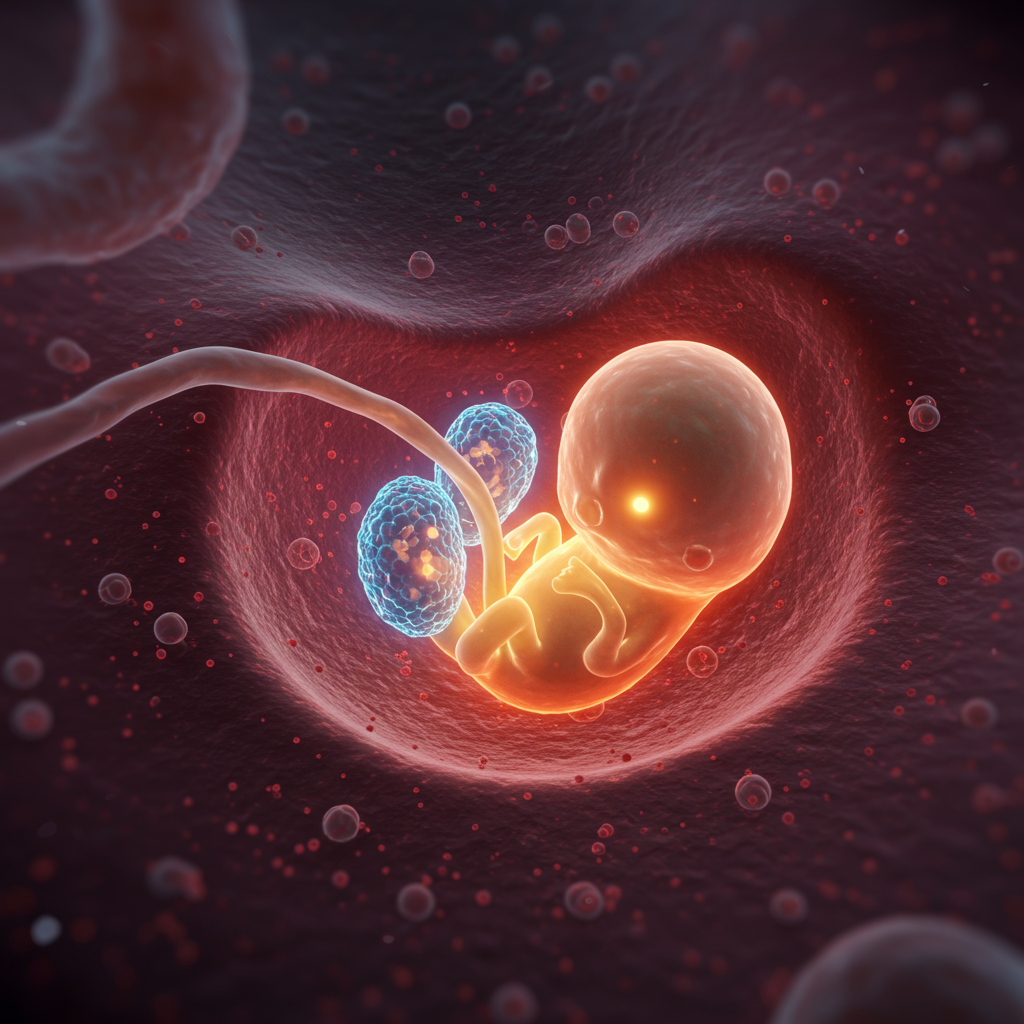For the first time ever, scientists have lifted the veil on one of life’s most profound and previously hidden moments: human embryo implantation. This groundbreaking achievement provides unprecedented real-time, 3D footage of an embryo actively burrowing into a simulated uterine environment. The insights gleaned from this “surprisingly invasive” process are set to revolutionize our understanding of early human development and hold immense promise for significantly improving infertility treatments and preventing early pregnancy loss.
This remarkable scientific leap fundamentally changes how we perceive the critical first step of pregnancy, moving beyond previous assumptions of a passive attachment to reveal a dynamic, forceful interaction. It’s a discovery that offers hope to countless individuals and couples grappling with fertility challenges globally.
The Unseen Miracle Revealed: How Scientists Captured Implantation
For decades, the process of human embryo implantation remained largely a mystery, hidden from view within the mother’s womb. Its fleeting nature, combined with the ethical and technical challenges of direct observation, meant scientists had to rely on static images, animal models, or indirect data. This lack of direct visualization created a significant “black box” in our understanding of human development, particularly regarding why so many pregnancies fail at this early stage.
To overcome these formidable barriers, researchers at the Institute for Bioengineering of Catalonia (IBEC) in Barcelona, in collaboration with Dexeus University Hospital, engineered a revolutionary platform. Their innovative system created an “artificial womb” in a lab dish. This specialized environment was not just a simple petri dish; it was a sophisticated gel matrix. Composed primarily of collagen, a protein abundant in the uterus, and supplemented with other crucial uterine tissue proteins, this matrix meticulously mimicked the extracellular environment where an embryo naturally implants.
Early-stage human embryos, generously donated by couples undergoing in vitro fertilization (IVF) treatments, were introduced into this meticulously crafted artificial environment. Using advanced microscopy techniques, specifically real-time fluorescence imaging, the team meticulously observed and recorded the embryos’ behavior. This allowed them to capture the intricate, never-before-seen process in four dimensions, providing a vivid, moving picture of implantation as it unfolded. Samuel Ojosnegros, principal investigator at IBEC, and Amélie Godeau, a co-first author, spearheaded this pivotal research, which has since been lauded by the scientific community for its transformative potential.
A Surprisingly Active Process: What the Footage Showed
The groundbreaking footage unveiled a startling truth: human embryo implantation is far from a passive event. Instead, it’s an incredibly dynamic and even “surprisingly invasive” process. The videos clearly showed the human embryo actively engaging with its surroundings, demonstrating remarkable agency.
Key observations from the study include:
Active Burrowing: Unlike a passive settling, the human embryo was seen to physically “burrow into the uterus,” effectively “digging a hole” for itself. It extends what researchers described as “little fingers or little arms” to pull itself deeper into the matrix.
Exertion of Force: Researchers quantified that the human embryo exerts “considerable force” during this process. This power output was unexpected and starkly contrasted with prior observations of mouse embryos.
Enzyme Release and Tissue Breakdown: The embryo actively releases specialized enzymes designed to break down the surrounding uterine tissue. This chemical action paves the way for its physical penetration.
Complete Penetration: A crucial distinction emerged from comparative experiments with mouse embryos. While a mouse embryo tends to stick superficially and spread out on the matrix, a human embryo exhibits a distinct behavior: it completely penetrates the uterine tissue before growing from the inside out. Ojosnegros emphasized that the human embryo “is stronger, it’s bigger, and it’s way more invasive.”
Formation of Connection Tissues: The burrowing embryo begins forming specialized tissues critical for connecting with the mother’s blood vessels. This process is analogous to how the placenta develops, actively invading a major maternal artery to secure nourishment for the developing fetus.
Understanding Implantation Cramps and Uterine Dynamics
One fascinating implication of these findings directly addresses a common experience reported by many pregnant women: implantation cramps and slight bleeding. Previously, the exact cause of this abdominal pain was speculative. Now, the observation that human embryos exert tangible traction forces on their environment, actively moving and reorganizing the uterine matrix, offers a compelling explanation. The physical “digging” and “pulling” motion of the embryo likely contributes to the sensations many women feel.
Furthermore, the study sheds new light on the role of uterine contractions. Amélie Godeau hypothesized that uterine contractions occurring in vivo (within a living body) might also significantly influence embryo implantation. The human uterus naturally contracts one to two times per minute, with varying patterns throughout the menstrual cycle. Previous research referenced in the study indicated that IVF patients with either excessively frequent or insufficient contractions on the day of embryo transfer experienced lower implantation rates. This suggests an “optimal frequency range” for uterine contractions might exist, favoring successful implantation—a crucial area for future reproductive biology research.
Revolutionizing Reproductive Health: Implications for Fertility
The implications of this breakthrough are profound for reproductive health. Implantation failure is currently the single largest hurdle in human reproduction. It’s identified as the primary roadblock in human infertility, accounting for an estimated 60% of all miscarriages and approximately two-thirds of all embryo losses, whether from natural conception or assisted reproductive technologies like IVF. Only about 30% of embryos successfully implant and make it to full term.
By finally witnessing and understanding the precise mechanisms of human embryo implantation, scientists can now begin to identify exactly why implantation frequently fails. This direct insight holds immense potential to:
Improve IVF Success Rates: The ability to observe and analyze optimal implantation conditions can lead to more effective protocols for IVF, a leading infertility treatment. Doctors may gain insights into selecting the most viable embryos or optimizing uterine conditions for transfer.
Develop New Infertility Treatments: A deeper understanding of the molecular and biomechanical interactions during implantation could pave the way for novel therapeutic interventions. This might include medications or techniques to enhance the embryo’s ability to implant, or to make the uterus more receptive.
Prevent Miscarriages: Since implantation failure is a leading cause of early pregnancy loss, unraveling its complexities is critical for developing strategies to prevent recurrent miscarriages, offering hope to couples who have experienced this heartbreaking challenge.
Beyond the Black Box: Future Directions in Embryo Research
This landmark study represents a monumental first step, but the research team has ambitious plans for the future. They aim to standardize the materials and methodologies used in their innovative platform. This standardization will enable other scientists worldwide to conduct similar experiments, fostering collaborative advancements in the field of embryo development and reproductive medicine.
Future research will delve deeper into various parameters, such as the stiffness of the extracellular matrix and the depth of embryo invasion, to understand how these factors influence the mechanics of this vital process. The goal is to build comprehensive models of the complex uterus and the intricate implantation process, pushing the boundaries of what’s possible in improving fertility rates and outcomes. The researchers also gratefully acknowledge the crucial contributions of the patients whose generous donation of embryos made this foundational research possible, underscoring the necessity of studying “our own species” for direct human health advancements. This research truly marks a new era, moving away from a passive view of implantation to one that recognizes the dynamic and active role of the human embryo in establishing pregnancy.
Frequently Asked Questions
What specifically did scientists observe about human embryo implantation?
Scientists observed that human embryos actively burrow into the uterine lining, exerting considerable force and releasing enzymes to break down surrounding tissue. Unlike mouse embryos, which stick superficially, human embryos fully penetrate the tissue before growing. This active, “surprisingly invasive” process helps explain phenomena like implantation cramps, and demonstrates the embryo’s dynamic role in establishing pregnancy.
Where was this groundbreaking research conducted?
This pioneering research was conducted by scientists at the Institute for Bioengineering of Catalonia (IBEC) in Barcelona, Spain. They collaborated with Dexeus University Hospital, also in Barcelona, which provided the human embryos for the study. The findings were published in the esteemed journal Science Advances.
How might this discovery impact current infertility treatments like IVF?
This discovery is expected to significantly impact infertility treatments such as IVF by providing unprecedented insights into why implantation often fails. Understanding the precise mechanical and biochemical processes of human embryo implantation could lead to improved embryo selection methods, optimized uterine conditions for transfer, and the development of entirely new interventions to enhance implantation success rates and reduce the incidence of early miscarriages.
A New Era for Reproductive Science
The first real-time footage of human embryo implantation marks a truly transformative moment in reproductive science. By illuminating this once-hidden biological event, scientists have unlocked a wealth of knowledge that promises to reshape our approach to infertility and early pregnancy loss. This deeper understanding of life’s intricate beginnings offers a beacon of hope, paving the way for more effective infertility treatments and ultimately helping more individuals achieve their dream of starting a family. The journey to truly master the nuances of embryo development has just taken a monumental leap forward, with far-reaching positive implications for global reproductive health.



